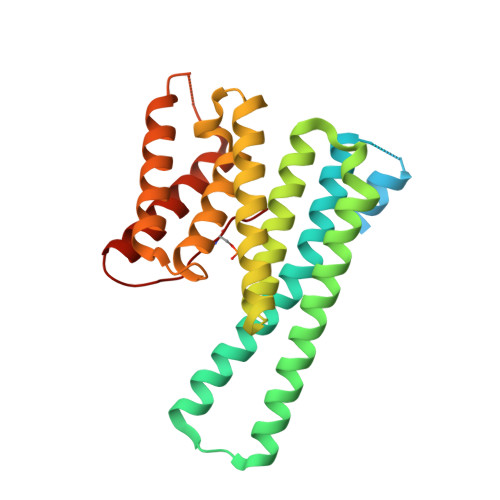Characterization of 14-3-3 proteins from Cryptosporidium parvum.
Brokx, S.J., Wernimont, A.K., Dong, A., Wasney, G.A., Lin, Y.H., Lew, J., Vedadi, M., Lee, W.H., Hui, R.(2011) PLoS One 6: e14827-e14827
- PubMed: 21853016
- DOI: https://doi.org/10.1371/journal.pone.0014827
- Primary Citation of Related Structures:
2NPM, 2O8P, 3EFZ - PubMed Abstract:
The parasite Cryptosporidium parvum has three 14-3-3 proteins: Cp14ε, Cp14a and Cp14b, with only Cp14ε similar to human 14-3-3 proteins in sequence, peptide-binding properties and structure. Structurally, Cp14a features the classical 14-3-3 dimer but with a uniquely wide pocket and a disoriented RRY triad potentially incapable of binding phosphopeptides. The Cp14b protein deviates from the norm significantly: (i) In one subunit, the phosphorylated C-terminal tail is bound in the binding groove like a phosphopeptide. This supports our binding study indicating this protein was stabilized by a peptide mimicking its last six residues. (ii) The other subunit has eight helices instead of nine, with αA and αB forming a single helix and occluding the peptide-binding cleft. (iii) The protein forms a degenerate dimer with the two binding grooves divided and facing opposite directions. These features conspire to block and disrupt the bicameral substrate-binding pocket, suggesting a possible tripartite auto-regulation mechanism that has not been observed previously.
Organizational Affiliation:
Structural Genomics Consortium, University of Toronto, Toronto, Ontario, Canada.
















